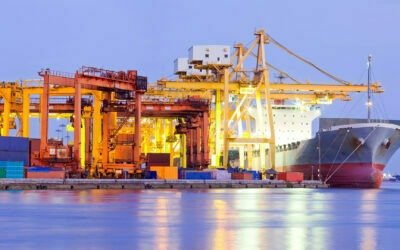Around 90,000 marine vessels carry out over 90% of the global trade through oceans. Ships, like all fossil fuel powered modes of transportation, emit carbon dioxide and, therefore, contribute considerably towards global emissions and climate change. More than 3% of the carbon dioxide emissions worldwide are caused by the shipping industry, which continues to grow rapidly to date [1]. If the global shipping industry were considered a country, it would be the sixth largest contributor of greenhouse gas emissions. Only the U.S., China, Russia, India, and Japan emit more CO2 than the entire global maritime fleet [1].




Shore to Ship Power Systems Service Overview
The research presented in this article is from PTR's Shore to Ship Power Systems market research. For information about this service please submit a request shown below.
Europe: +49-89-12250950
Americas: +1 408-604-0522
Japan: +81-80-7808-1378
GCC/Rest of APAC: +971-58-1602441
More About our: Shore to Ship Power Systems Market Research
Recent Insights
Decarbonizing the Baltic Sea: The Push for Shore Power Infrastructure in Ports
• Baltic Sea ports are showing strong affinity towards the deployment of shore power infrastructure.• Currently, more than 90 shore power facilities are available at the major ports of the Baltic Sea region.• Ports as well as cruise line owners are pushing to curtail...
Standardizing Vessel Charging: Overcoming the Barrier to Electrification in the Maritime Industry
• The vessel charging technology adoption is slow across the globe mainly due to lack of global vessel charging standards which is expected to impact the electrification of maritime sector if not taken care of.• The reason for the lack of global charging standards is...
Net-Zero Commitments Encouraging Growth in Carbon dioxide Removal Technologies
Carbon removal may be achieved through nature-based methods or by employing certain technologies, such as CCS and DAC. The drive to net-zero has resulted in enhanced interest and investment in CCUS. Carbon removal technologies should act as supplements, not...
Summary of Developments at COP27
The Sharm El-Sheikh Climate Conference officially ended with an historic climate “loss and damage” fund being set up on Sunday, 20 November. Here are key highlights from the conference. The “loss and damage” fund is an official acknowledgement of the fact that poorer...
The 2022 United Nations Climate Change Conference (COP27): Overview, Structure, and Achievements
The Sharm El-Sheikh Climate Change Conference is currently underway in Egypt, commencing on 6 November 2022 and ending on the 18th. The conference builds on pledges made in the COP26 at Glasgow last year and comprises of a series of events to build on future ambition....
Harnessing Clean Energy at the Port: Europe’s Shore Power Market
Shore Power is actively gaining popularity around the world as countries are finding ways to de-carbonize the maritime industry. This technology allows a ship to turn off its on-board engines and get external electric power from the shore where it is berthed. Shore...
CIGRE Conference Impressions – 2022
The CIGRE Paris session, which ended just four weeks ago, was a mix of optimism and anxiety. The conference was attended by more than 9,000 attendees from 120 counties, out of which 35% were from the electrical utilities and 25% from the manufacturing sector. In past...







